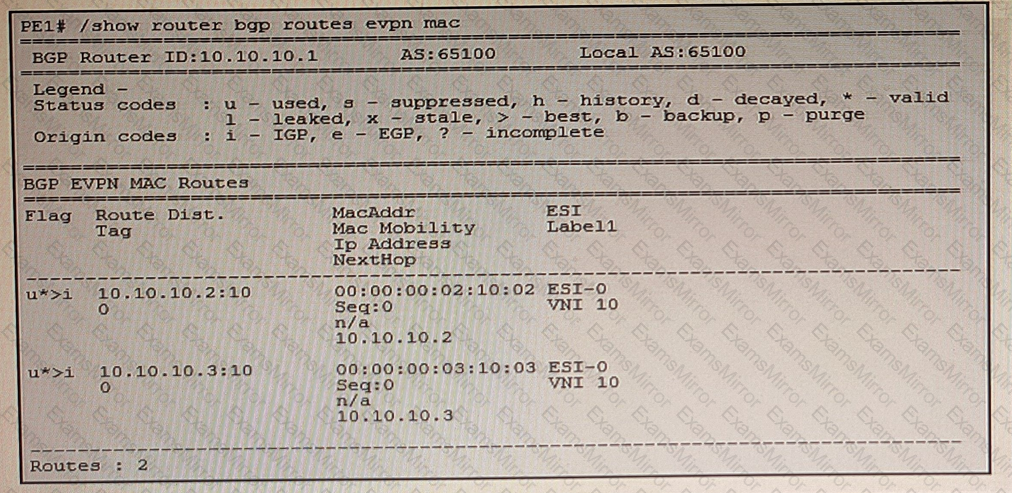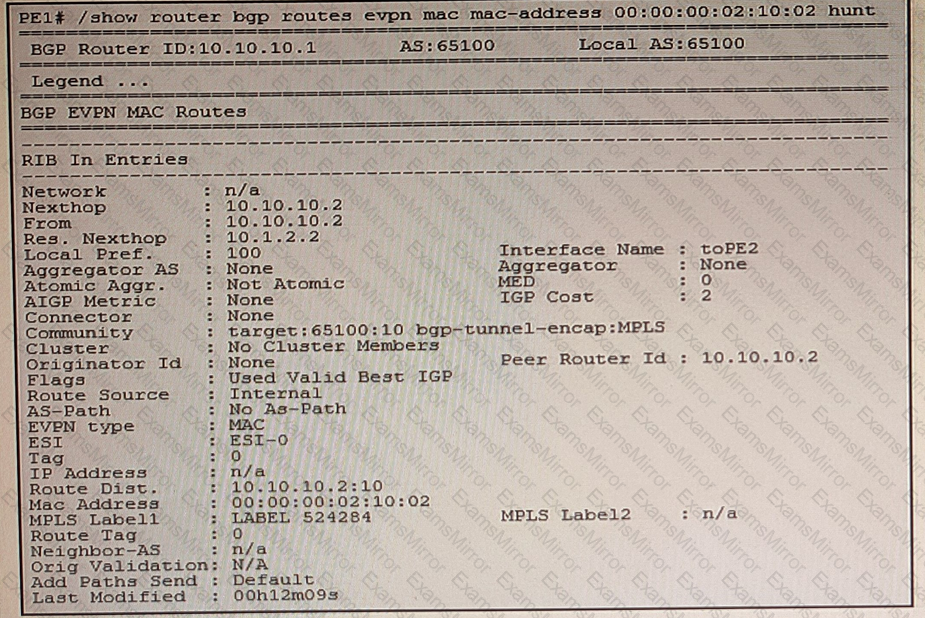Cyber Monday Special Limited Time 70% Discount Offer - Ends in 0d 00h 00m 00s - Coupon code = getmirror
Pass the Nokia Service Routing Architect 4A0-115 Questions and answers with ExamsMirror
Exam 4A0-115 Premium Access
View all detail and faqs for the 4A0-115 exam
683 Students Passed
96% Average Score
95% Same Questions
In the exhibit, the interface-less forwarding model is used for the Layer-3 EVPN service. Which of the following statements about traffic forwarding from Host 1 to Host 2 is FALSE?

Based upon the exhibit, which of the following statements is FALSE?

Based upon the exhibit, which of the following statements is FALSE?

Which of the following statements does NOT describe the operation of the Layer-3 EVPN asymmetric forwarding model?
Examine the exhibit.

Which of the following statements about the operation of VPLS 20 is TRUE?
Based on the exhibit below, which of the following statements is TRUE?

The interface-ful numbered model is used for a Layer-3 EVPN service. Which of the following statements is FALSE?
In the exhibit, the EVPN-IRB is using the interface-ful unnumbered model and is fully operational. Which of the following statements isFALSE?

Which of the following statements about PE-to-PE MAC address advertisement is FALSE?
Which of the following statements about EVPN auto-discovery per EVPN instance (A-D per EVI) routes is FALSE?
TOP CODES
Top selling exam codes in the certification world, popular, in demand and updated to help you pass on the first try.
